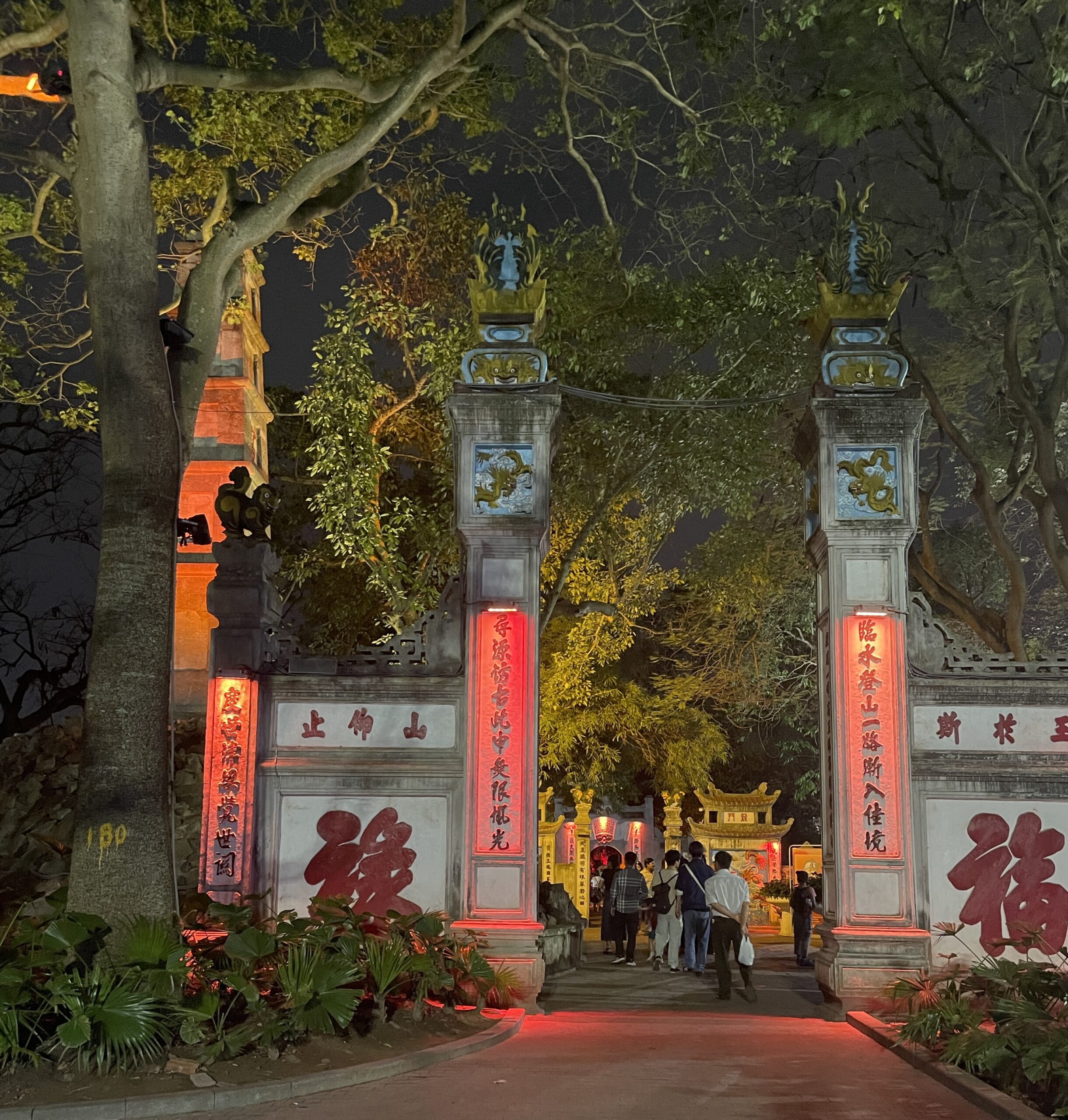19 Best Things to Do in Hanoi, Vietnam
Hanoi is loud, poetic, chaotic, and calm, often all at once. If you only explore its surface, it might just feel like another crowded Southeast Asian capital.
But give it a few days, and the city reveals its rhythm. The clash of ancient temples, crumbling colonial facades, and motorbike mayhem gives way to a strangely addictive harmony.
Whether you’re here for a short visit or Hanoi is your first stop on a bigger Vietnam itinerary, there are plenty of things to do that go beyond the usual highlights.
This list isn’t just about the “top-rated” attractions; it’s built for travelers who want to immerse themselves, wander, and truly feel the place, not just photograph it.
Let’s dive into the best things to do in Hanoi, Vietnam, with a few local insights and mistakes to avoid along the way.
Wander Through the Old Quarter
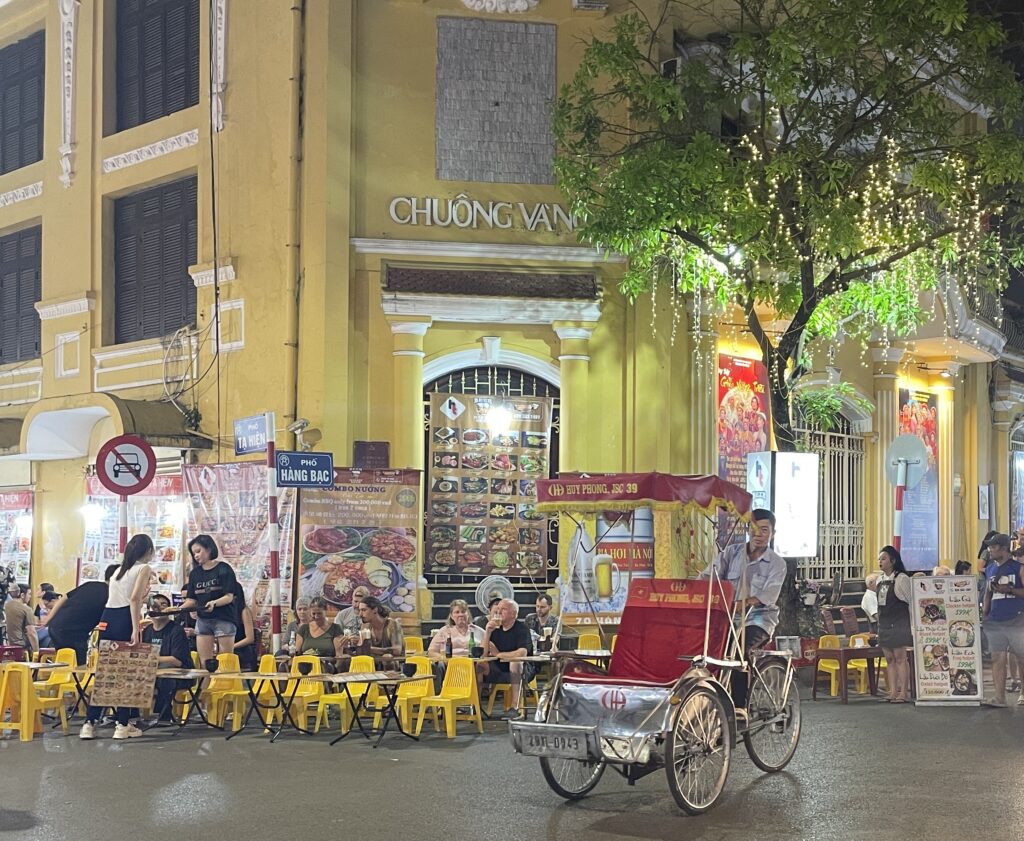
Hanoi’s Old Quarter is where the city is at full blast. Imagine tight alleyways, whizzing scooters, neon-lit signage, and the aroma of sizzling street food every few steps. It’s a maze of sensory overload, in the best way.
You’ll pass colonial buildings next to family-run noodle shops, with locals sitting curbside on tiny plastic stools.
Sure, it’s chaotic, but that’s part of the charm. If you want a glimpse of authentic Hanoi hustle, this is where you start.
And if you’re wondering whether to stay in this district or not, I’ve covered that in where to stay in Hanoi, so you can decide if this kind of high-octane vibe fits your trip.
Visit the Temple of Literature
Built in 1070 and dedicated to Confucius, this isn’t just another temple. The Temple of Literature is a tranquil step back in time and a symbol of Vietnam’s deep-rooted respect for scholars and education.
Inside, you’ll find ancient stone tablets resting on turtle statues (yes, really), peaceful courtyards, and bonsai trees shaped like they’ve been meditating for decades.
It’s one of the best places in Hanoi to escape the noise and soak in some history momentarily, without the overwhelming crowds.
Stroll Around Hoan Kiem Lake
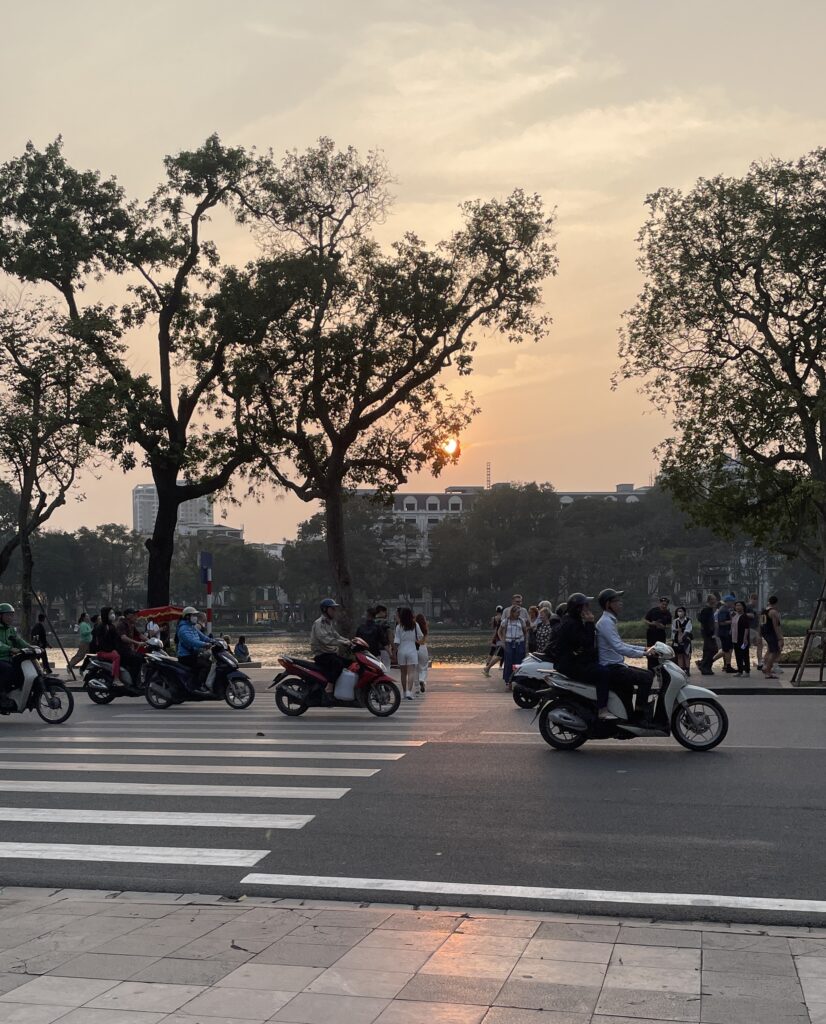
To experience the essence of Hanoi, walk around the perimeter of Hoan Kiem Lake.
Mornings are especially magical, with locals practicing tai chi and elderly uncles doing power laps in sandals.
It’s also the city’s favorite people-watching spot, from teens taking selfies to vendors selling balloon animals.
The red bridge leading to Ngoc Son Temple is especially photogenic around sunset, and nearby you’ll find some of the city’s most iconic architecture. Want a complete experience? Grab a cup of egg coffee at a rooftop nearby and take in the view.
If Hanoi feels like a layered scroll of history and tradition, then Da Nang brings a coastal contrast, clean beaches, modern bridges, and a much more laid-back vibe. If you’re planning to hit both cities, I’ve laid out the best things to do in Da Nang to balance your itinerary.
Try Hanoi’s Signature Pho
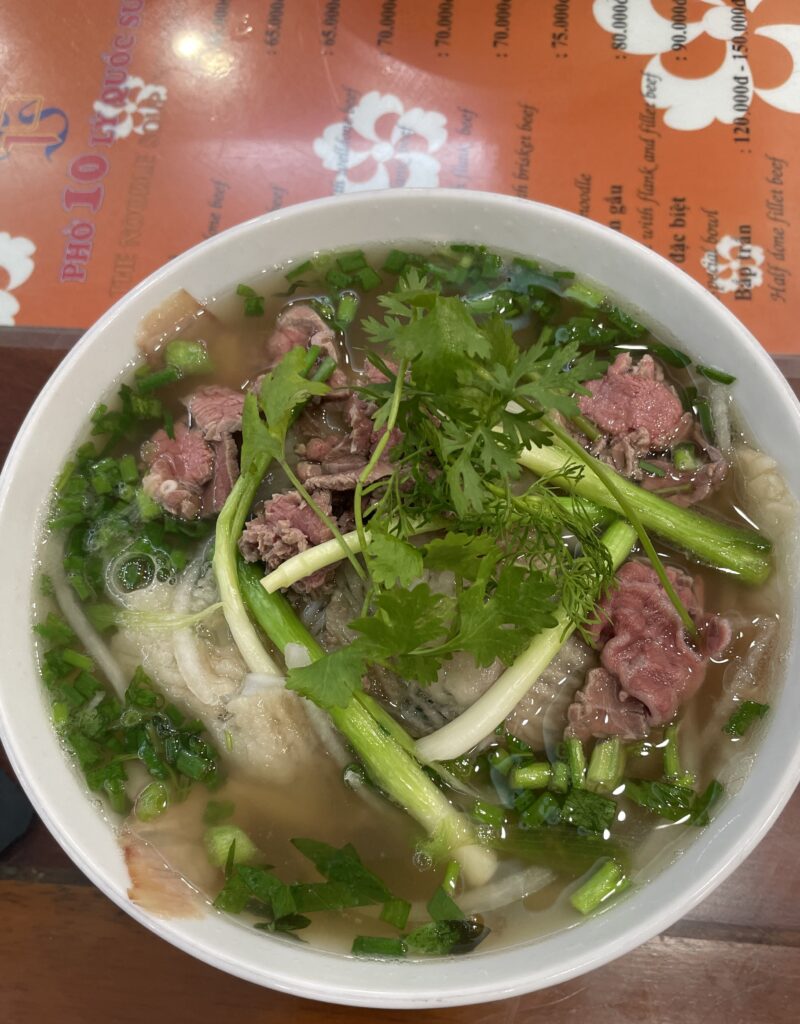
You can’t talk about Hanoi without talking about pho. This is the city where Vietnam’s most iconic noodle soup was born, and let me tell you, it’s different here.
The broth is clearer, lighter, but still impossibly rich with beef bones and spices that have been simmering since dawn.
Whether you’re a pho purist or trying it for the first time, it’s worth sampling a few bowls around town. I’ve eaten my way through dozens of spots, and these are the absolute best pho restaurants in Hanoi you shouldn’t miss.
I prefer Hanoi-style Pho over Saigon’s; the broth is richer, less sweet, and more balanced. Hanoi keeps it simple and bold.
Visit the Hanoi Night Market
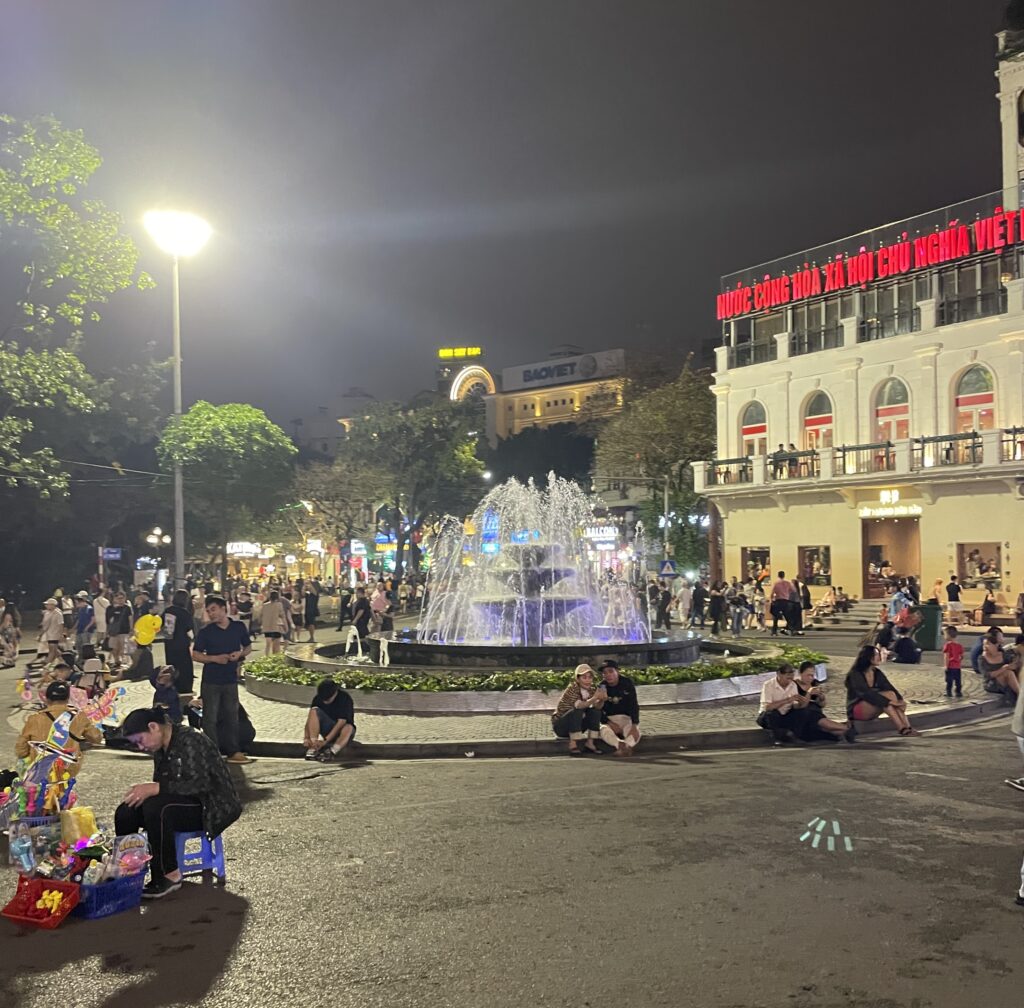
On weekend evenings (Friday to Sunday, 6:00 PM to 11:00 PM), the Old Quarter transforms into a pedestrian-only frenzy.
The Hanoi Night Market stretches from Hang Dao Street to Dong Xuan Market, and it’s a full sensory overload, street food sizzling, souvenirs glittering, and performers belting out karaoke at full volume.
Nearby, the roads around Hoan Kiem Lake are also closed to traffic from Friday night through Sunday night, turning the area into a vibrant walking street.
Expect live music, folk games, and a variety of street performances that make the entire downtown core feel like one massive night festival.
Come hungry and come curious, this is where you’ll see local Hanoi nightlife at its most chaotic (and most fun). Be prepared to haggle a little, especially for clothes, trinkets, or quirky souvenirs.
Take a Day Trip to Scenic Ninh Binh

Want to escape the chaos for a day? Ninh Binh is your answer. Just a couple of hours south of Hanoi, this region is characterized by dramatic limestone karsts, winding rivers, ancient pagodas, and peaceful rice fields.
You can row through caves in Trang An, climb to the viewpoint at Hang Mua, or wander through the ancient capital of Hoa Lu.
If you have more time to explore Vietnam, I actually included Ninh Binh in my 5 Day Itinerary in Hanoi because it’s well worth it!
Watch a Show at the Thang Long Water Puppet Theatre
Water puppetry might sound like a niche art form, but it’s one of Vietnam’s most unique cultural traditions, and it all started in the rice paddies centuries ago.
Today, the Thang Long Water Puppet Theatre presents nightly performances featuring wooden puppets dancing on water, accompanied by live traditional music and folk tales.
Even if you don’t understand Vietnamese, the show is charming and surprisingly humorous. It’s especially fun if you’re traveling with kids or want a deeper look into local folklore.
Explore the Train Street (Responsibly)
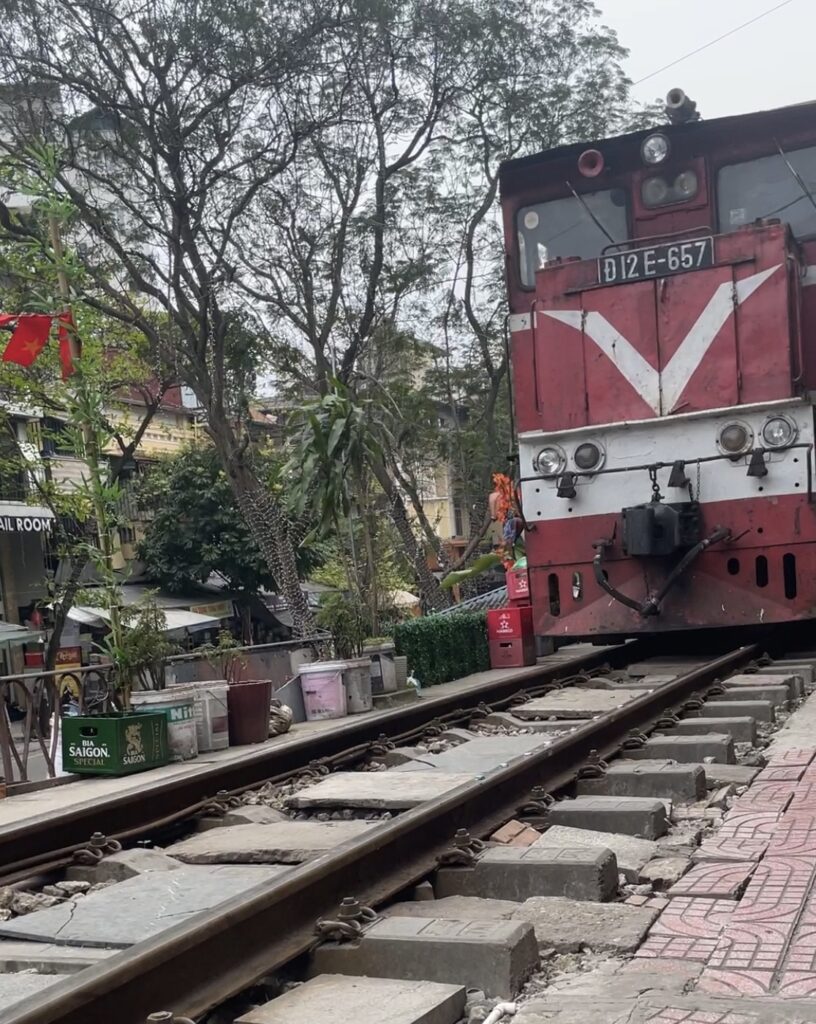
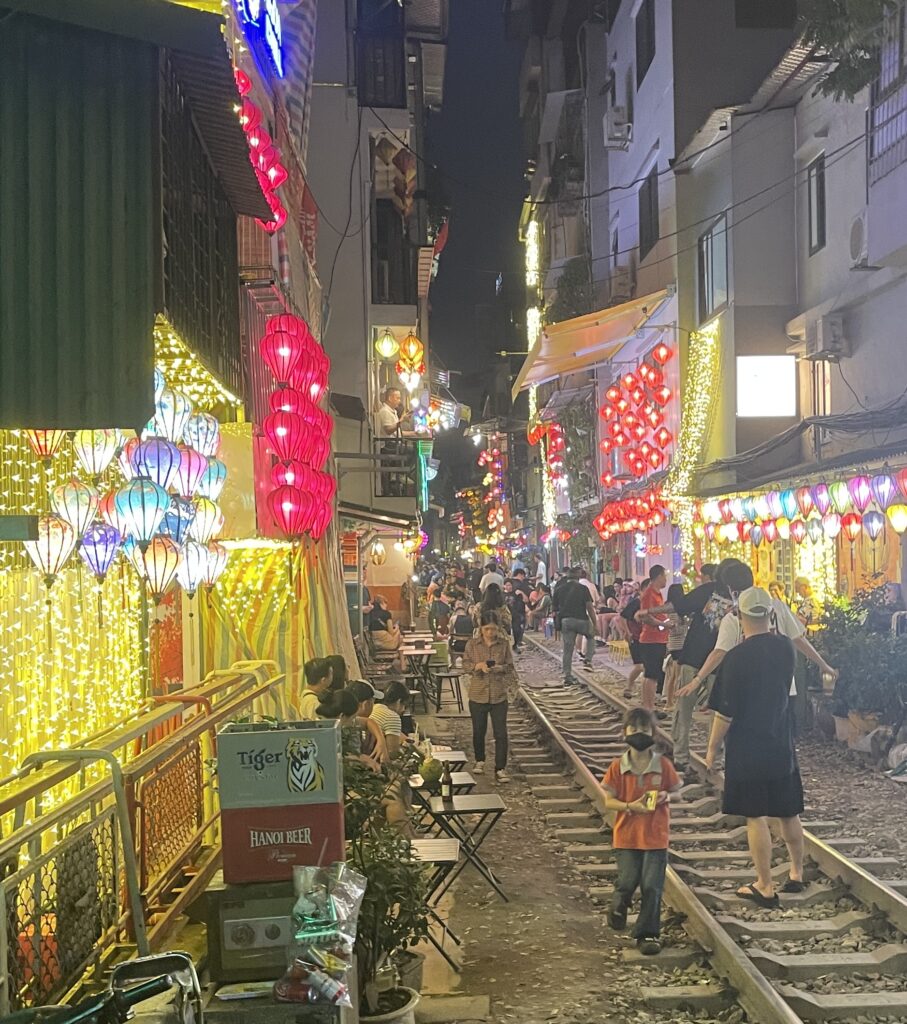
This narrow stretch of track, sandwiched between tightly packed homes and cafés, is one of Hanoi’s most iconic and most photographed spots.
However, despite its appearance on Instagram, Train Street is still a genuine neighborhood, not a tourist attraction.
The best way to visit is by going to one of the cafés legally allowed to operate there. Don’t block the tracks, don’t hover with a camera in front of someone’s door, and remember: people live here, not just influencers on scooters.
Tip: Be cautious of fake police scams. Some pose as officials and claim you have to pay to enter the street.
To avoid this, find a legit café on Google Maps (check the reviews), message them ahead of time, and let them know you’re coming. Many will even meet you outside and walk you in, and they’ll also tell you what time the train is scheduled to pass.
Experience Hanoi’s Nightlife on Beer Street (Ta Hien)
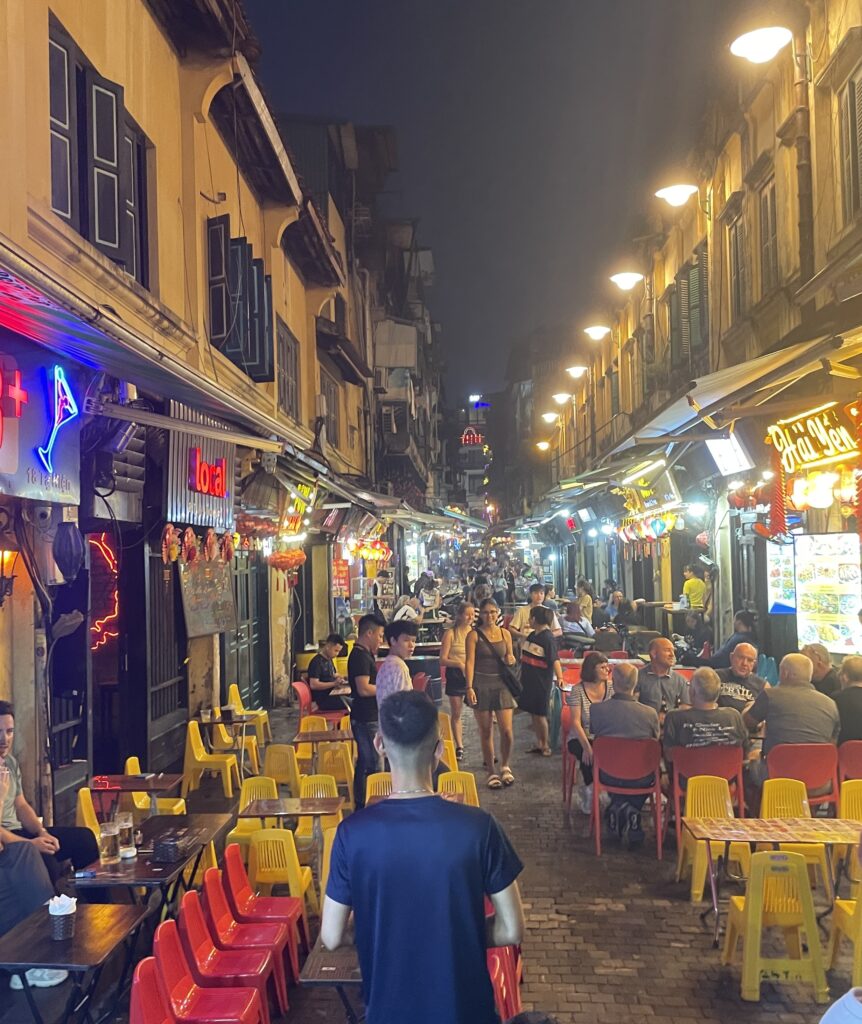
For those who want to experience Hanoi after dark, Beer Street is the go-to destination.
Ta Hien Street becomes an electric blend of international backpackers, local students, plastic chairs, and draft beer served for less than a dollar.
It’s loud, it’s fun, and it’s chaotic in the best way. Even if you’re not a party person, swing by to experience the energy. It’s like Hanoi condensed into a single block.
Climb to the Top of Lotte Observation Deck
Want panoramic views of Hanoi from above? Head to the Lotte Observation Deck.
Located on the 65th floor of the Lotte Center, this spot gives you one of the best views of the city skyline.
Come during sunset or just before dark, and you’ll see the city slowly light up beneath you, a surprising contrast to the chaos below.
Eat Your Way Through a Street Food Tour
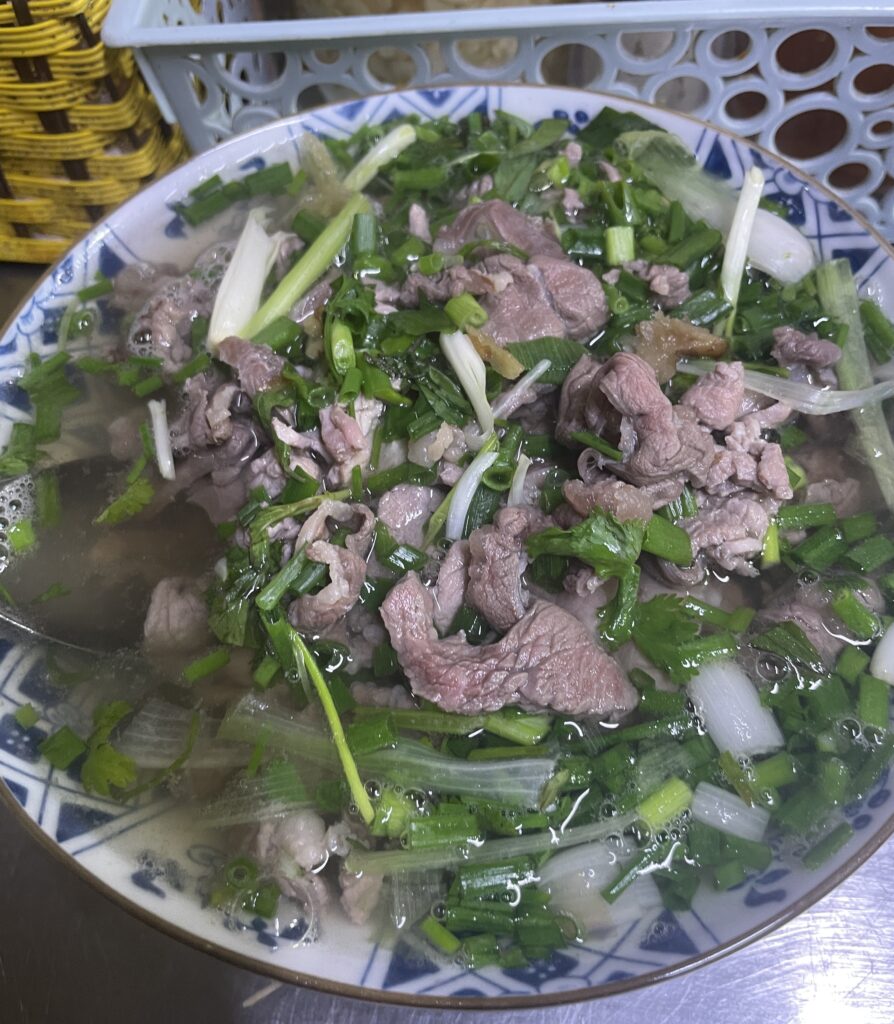
If you’re not quite sure what to eat, or where to begin, book a street food tour with a local.
These tours often take you to tucked-away eateries and family-run spots you’d never find on your own.
From bun cha and banh cuon to grilled meats and more egg coffee than you thought you could drink, a food tour is both delicious and educational.
You’ll walk, eat, laugh, and come away with a deeper appreciation for the city’s culinary soul.
Visit the Ho Chi Minh Mausoleum
This solemn site is where Vietnam’s founding father, Ho Chi Minh, lies embalmed.
The Ho Chi Minh Mausoleum is a place of deep reverence, so dress respectfully and expect a slow-moving line to file past the glass case.
Even if you don’t go inside, the surrounding Ba Dinh Square, Presidential Palace, and One Pillar Pagoda are all worth a wander.
Sip Egg Coffee at a Café
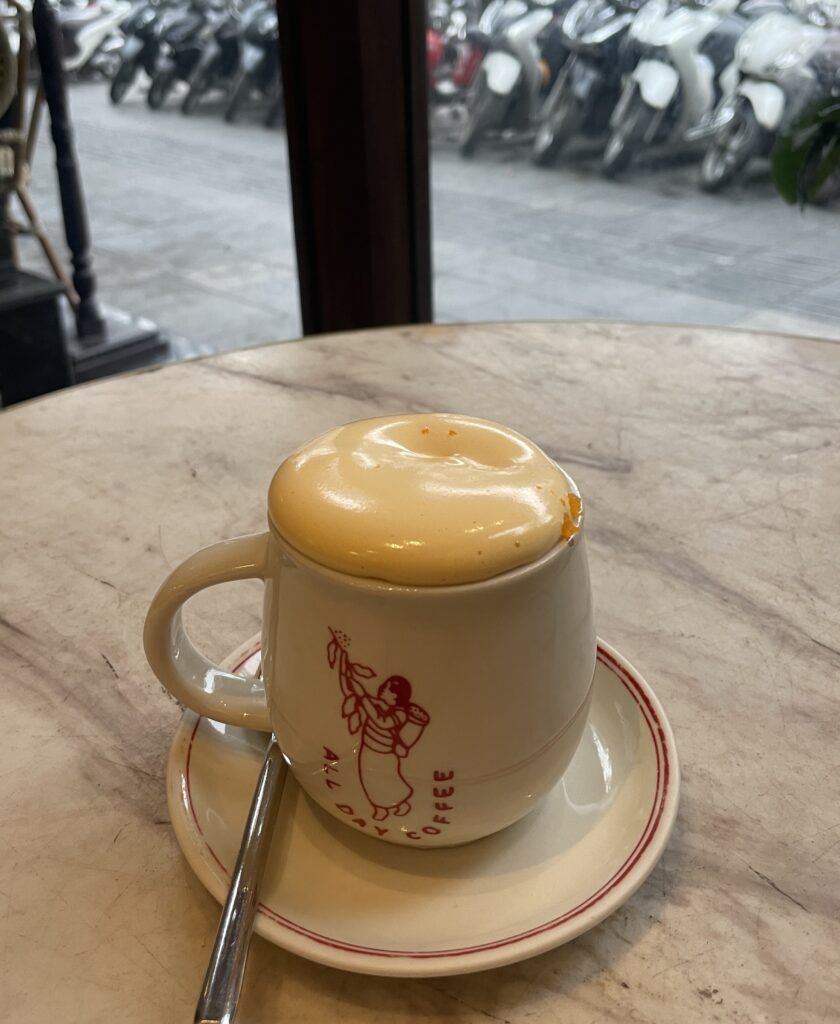
Yes, it sounds weird. But Hanoi’s signature egg coffee, made with whipped egg yolk and condensed milk over hot coffee, is unexpectedly rich and velvety.
Head to a café and sip slowly on Hanoi’s most famous and recognized Vietnamese coffee creation!
It’s one of those “when in Hanoi” experiences, and much better than it sounds.
Explore the French Quarter and the Hanoi Opera House
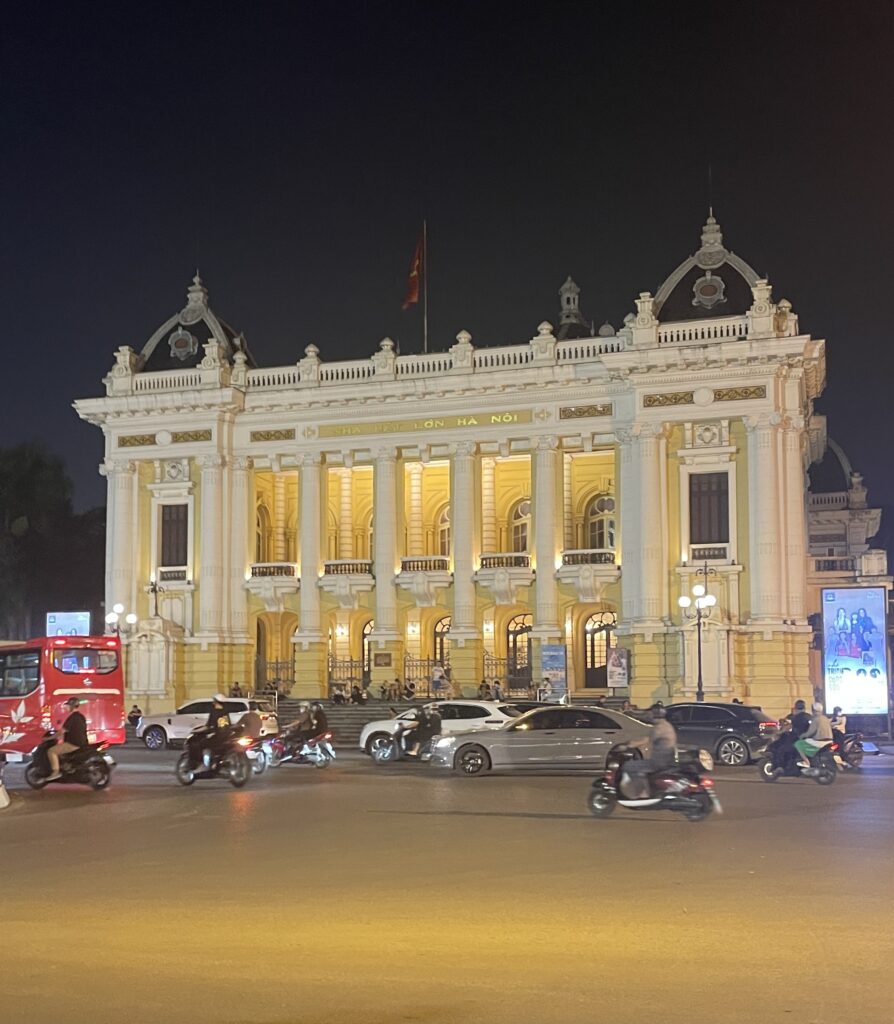
The French Quarter feels like a different city. Wide boulevards, elegant facades, luxury boutiques, and the centerpiece: the Hanoi Opera House. It’s a stark contrast to the narrow lanes of the Old Quarter.
Come during the day to admire the colonial architecture, or at night when the opera house glows. It’s also where you’ll get a taste of Hanoi’s more refined side.
Visit the Vietnam Museum of Ethnology
For a deeper understanding of Vietnam’s cultural tapestry, this museum is a must.
It showcases the 54 recognized ethnic groups of Vietnam, with artifacts, clothing, and traditional homes you can walk through in the outdoor area.
It’s educational without being dry, and well worth the visit if you want to understand the country beyond just Hanoi.
Discover the B52 Wreckage in Huu Tiep Lake
Tucked into a quiet neighborhood, this eerie relic of the Vietnam War is exactly what it sounds like: the wreckage of an American B52 bomber, still sitting in a pond.
It’s haunting, surreal, and an important piece of modern history that many tourists overlook.
Take a Cooking Class with a Local Chef
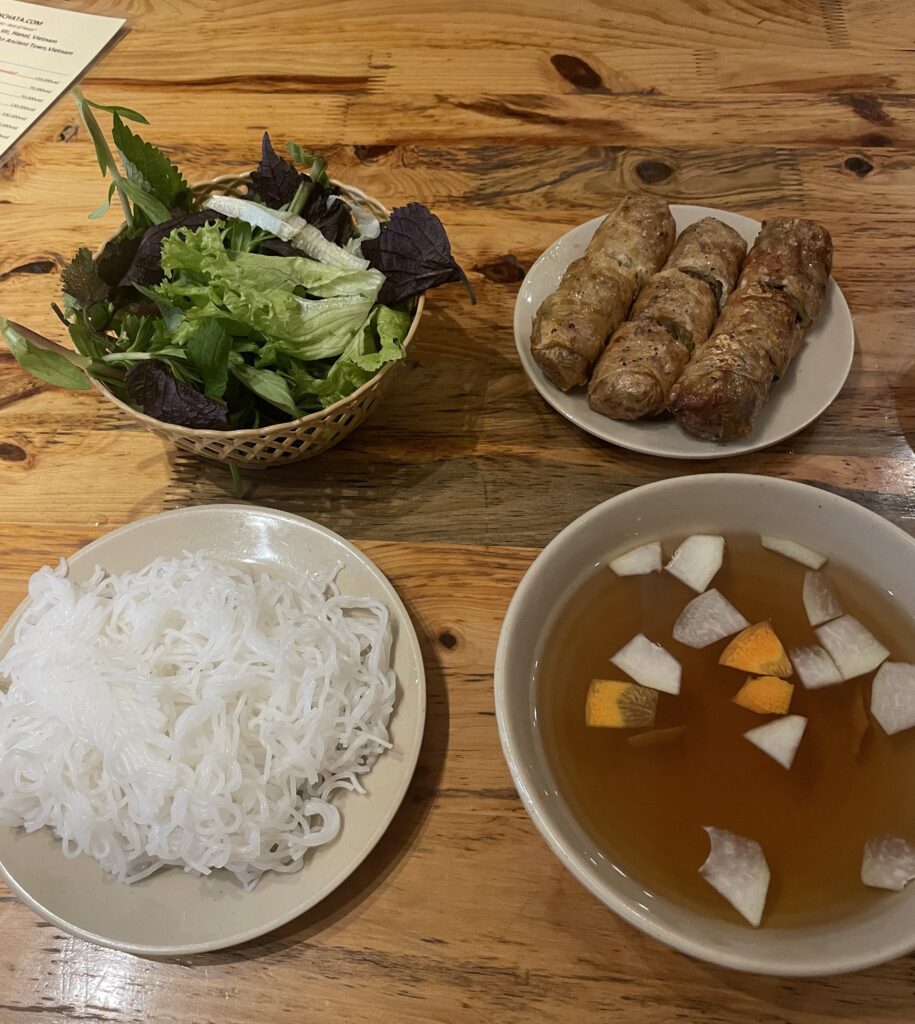
Want to do more than just eat Vietnamese food? Learn how to make it. Cooking classes in Hanoi usually start with a market visit before heading back to a local kitchen.
You’ll chop herbs, sizzle pork, and roll fresh spring rolls under the guidance of someone who’s likely been doing it since childhood. It’s hands-on, fun, and gives you recipes to take home.
Shop at Dong Xuan Market
Hanoi’s largest indoor market is chaotic in the best way. Dong Xuan Market is a labyrinth of stalls selling everything from knockoff handbags to dried squid.
Even if you’re not buying anything, it’s worth walking through to get a sense of Hanoi’s commercial hustle, and maybe grab a snack or two along the way.
Stroll Around West Lake (Tay Ho)
If you’re looking for a break from the madness, head to West Lake. It’s Hanoi’s largest lake, surrounded by cafés, temples, and leafy walking paths. This area is more laid-back and a favorite among expats.
Grab a coconut coffee, rent a bike, or just take a slow walk at sunset. You’ll see a different side of the city here, one that’s surprisingly peaceful.
Take a Day Trip or Overnight Cruise to Ha Long Bay

Technically not in Hanoi, but close enough to make the list. Ha Long Bay is Vietnam’s poster child for natural beauty, towering limestone islands, emerald waters, and junk boats slicing through the mist.
You can visit as a long day trip, but an overnight cruise is the way to go. If you’ve got the time, don’t skip this one, it’s worth the detour.
Getting Around Hanoi
Getting around Hanoi isn’t hard; it’s just different. Between the constant buzz of motorbikes, narrow alleyways, and uneven sidewalks, it’s a city best explored with a little flexibility and a lot of curiosity.
That said, transportation is generally affordable and efficient if you know what to expect.
However, be cautious of taxi scams in Vietnam, especially at the airport and in major tourist areas. Never accept random ride offers from people yelling “Taxi!” Always confirm your driver and avoid unmarked vehicles.
- Airport Transfers: It’s best to pre-book a private transfer from Noi Bai Airport to avoid the arrival chaos, and yes, taxi scams in Hanoi are just as notorious as they are in Saigon. If you’d rather use an app, Grab is a solid option from the airport, too.
- Walk When You Can: Central Hanoi, especially around the Old Quarter and Hoan Kiem Lake, is highly walkable. You’ll get the best sense of daily life on foot, from hidden cafés to pop-up food carts. Just be aware that sidewalks often double as motorbike parking and dining areas, so watch your step.
- Grab is the most widely used app across Southeast Asia and works reliably in Hanoi. You can choose between motorbike taxis and cars, and prices are fixed upfront, with no need for negotiation.
- inDrive: is another rideshare app available in Hanoi. It lets you propose your fare, and drivers can accept or counter, good for those who like a bit of flexibility.
- Public Buses: Hanoi’s bus system is cheap and extensive, but it’s not the fastest. Use the BusMap app to navigate routes and schedules. Buses are helpful for daytime travel, avoid rush hour and keep an eye on your belongings.
- Local Taxis: Stick to reputable companies, such as Mai Linh or G7. Always ensure the meter is running, and be wary of fake taxis with similar branding. Avoid flat-rate offers unless you have arranged them through your hotel.
- Motorbike Rentals: Renting a scooter in Hanoi gives you total freedom, but Hanoi traffic is not beginner-friendly. Only consider this if you’re confident riding in chaotic conditions and have proper travel insurance that covers motorbike use.
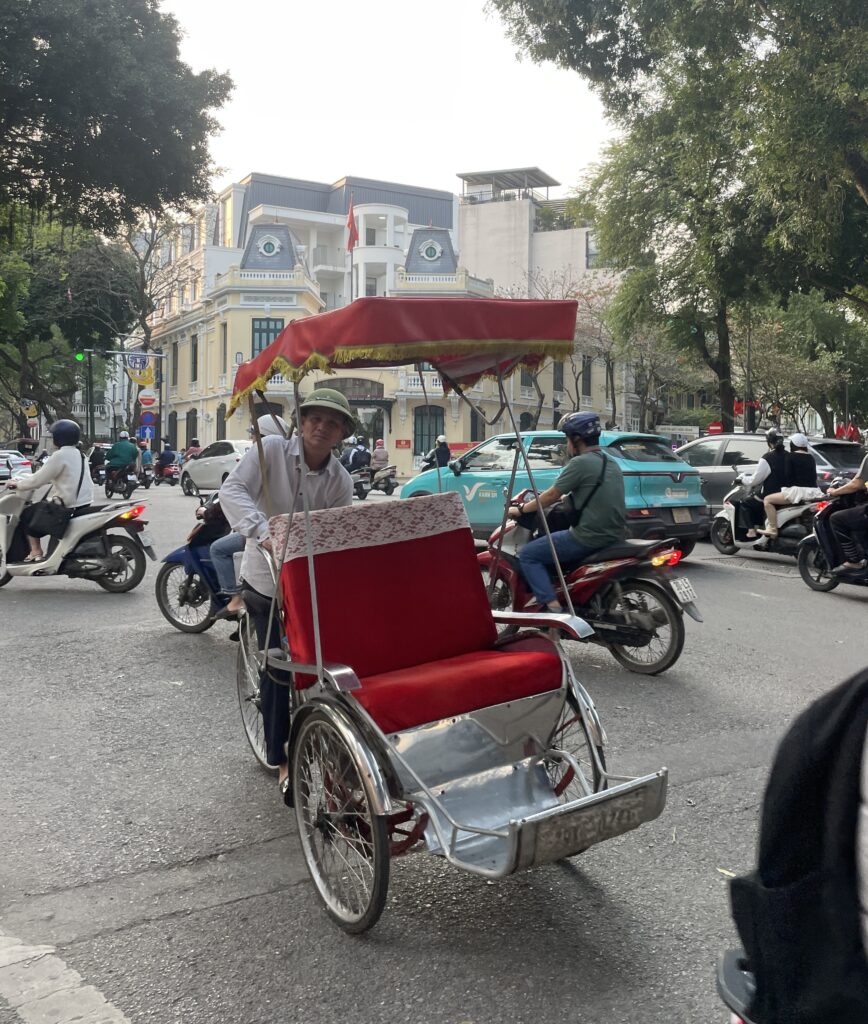
Best Time to Visit Hanoi
Hanoi experiences all four seasons distinctly, and when you visit, it can completely shift your experience, from the vibe on the streets to the number of tourists you’re sharing it with.
Spring and Autumn are the most popular for good reason, but even the colder winters and steamy summers have their charm (and fewer crowds).
One important thing to note? Hanoi’s winter is surprisingly cool, especially if you’re expecting Vietnam to be uniformly hot.
While Ho Chi Minh City (aka Saigon) down south is basking in its dry-season prime from December through February, Hanoi often sits under overcast skies with misty mornings and temperatures that dip below 15°C (59°F). There’s an entirely different energy between the north and the south.
Spring: March to May
Spring is one of the best times to visit Hanoi. Temperatures hover between 18 °C and 28°C (64°F and 82°F), flowers bloom across the city, and the air feels fresher after the gray winter months.
This is also when Tet (Vietnamese New Year) typically occurs, usually between late January and mid-February.
If your trip overlaps, expect beautiful decorations and family celebrations, but also note that most businesses close for 2–3 days. Hanoi, in particular, becomes quiet during this time, more so than cities in central or southern Vietnam.
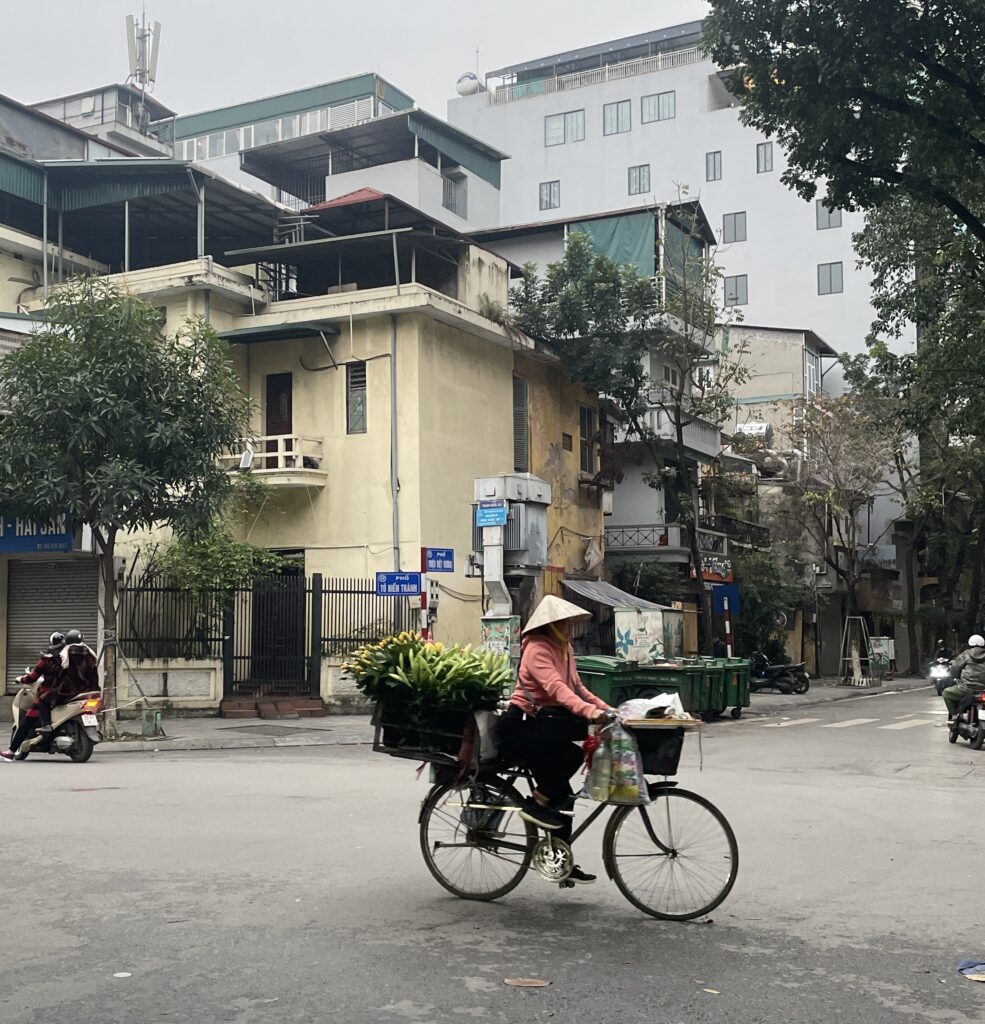
Summer: June to August
Summer in Hanoi is hot and humid, with daytime temperatures ranging from 30–38°C (86–100°F). The humidity can be intense, especially around midday.
That said, summer has its upsides: fewer tourists, cheaper hotels, and long evenings when the city feels especially alive.
Plan your sightseeing for early in the day or after sunset, and be prepared for sudden rain showers here and there.
Autumn: September to November
This is Hanoi’s golden season. Temperatures drop to a more pleasant range between 24–30°C (75–86°F), the skies are clearer, and there’s a crispness in the air that makes walking the city feel romantic and refreshing.
Parks, lakes, and tree-lined streets (especially around the French Quarter and West Lake) are at their most scenic. It’s also a prime season for photography and local festivals.
Winter: December to February
Winter in Hanoi is cool and gray, and surprisingly chilly. While it rarely drops below 10°C (50°F), the dampness and lack of indoor heating can make it feel colder than expected.
If you’re coming from a tropical climate, pack a warm jacket. Foggy mornings and quieter streets make the city feel more introspective, especially around Hoan Kiem Lake and in the Old Quarter.
It’s not peak travel season, so you’ll get better deals on accommodation and fewer crowds at major attractions.
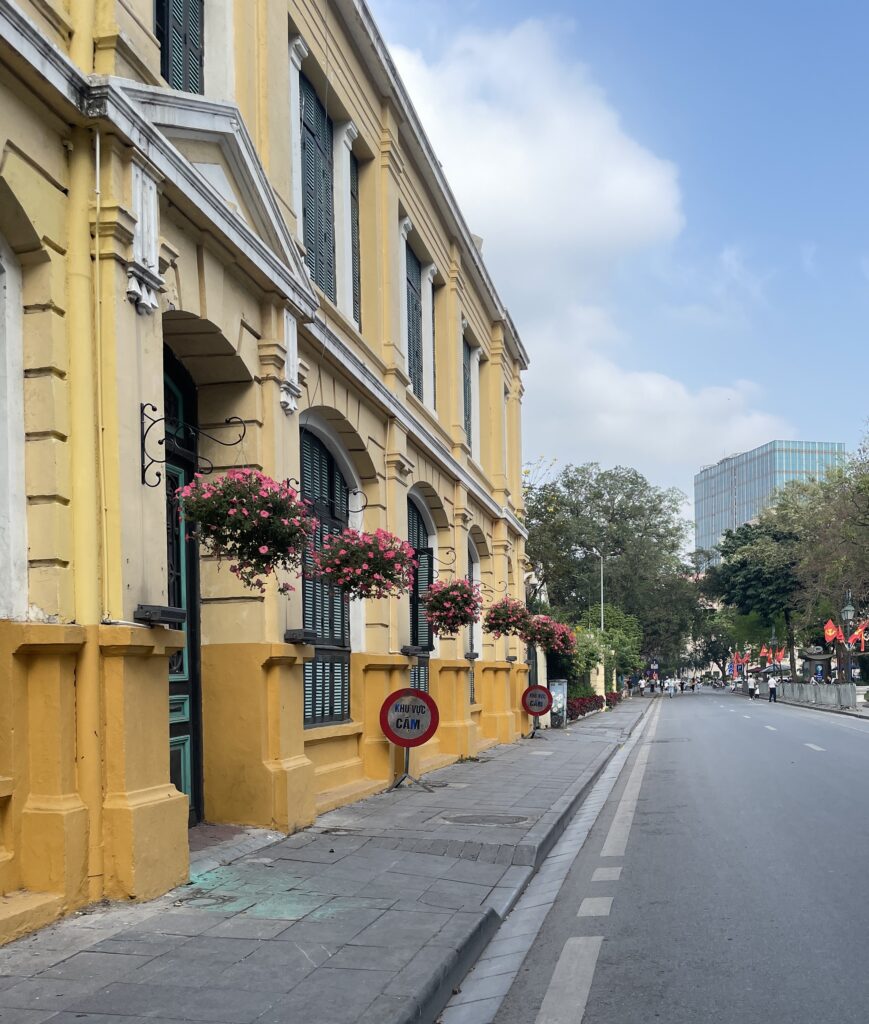
What to Buy in Hanoi
Shopping in Hanoi isn’t just about souvenirs to buy from Vietnam, it’s about finding practical keepsakes that reflect the city’s culture and daily life.
Whether you want something to wear, sip, or bring home as a gift, Hanoi’s markets and specialty shops offer a bit of everything.
Tailored Clothing & Suits:
Hanoi is a fantastic (and often overlooked) place to get custom-made suits, dresses, and clothing. It’s not as famous as Hoi An, but the tailors here are skilled and usually more affordable. You’ll find great options around the Old Quarter and Ba Trieu Street.
Cotton Shirts & Loungewear:
Vietnam is renowned for its breathable, lightweight cotton, which is ideal for hot climates and casual wear. You’ll see plenty of relaxed, airy shirts in markets and boutiques, perfect for travelers looking to ditch the polyester and upgrade their travel wardrobe.
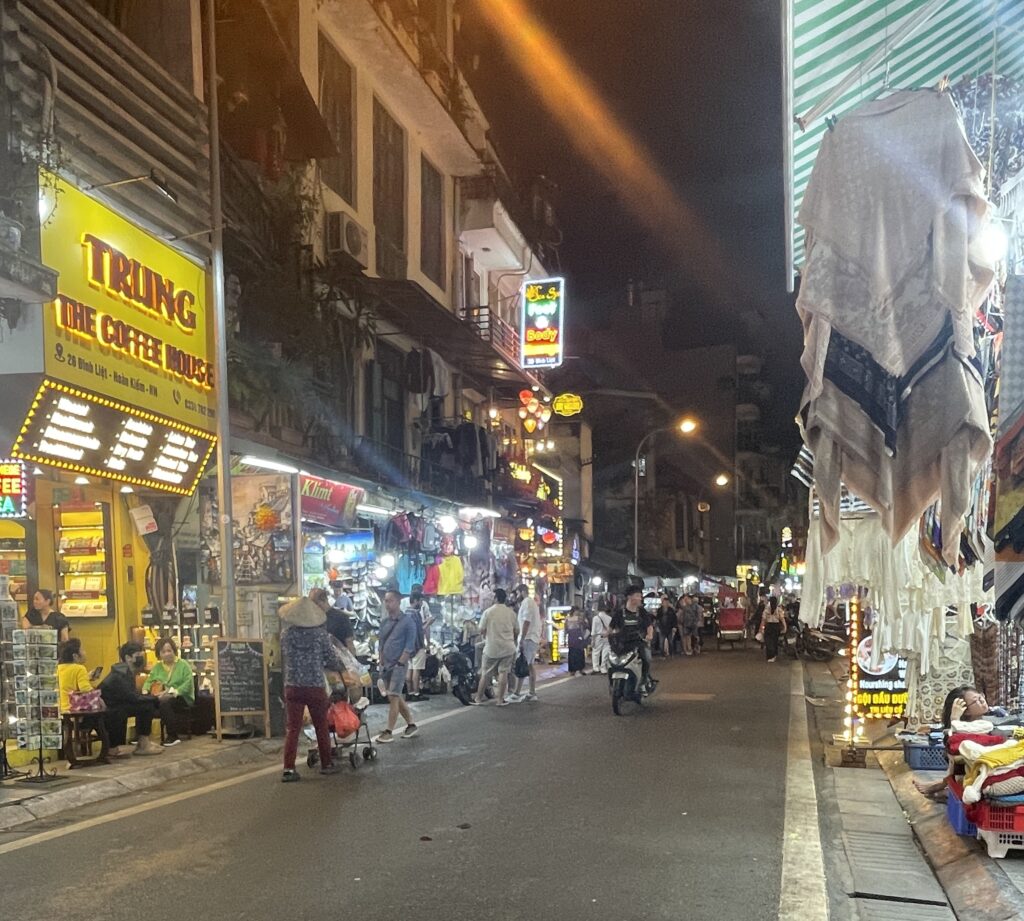
Handicrafts & Home Goods:
You’ll find handwoven baskets, ceramic dishes, bamboo goods, and all kinds of artisan crafts in markets like Dong Xuan or boutique stores near the French Quarter.
Many of the woven baskets and buffalo leather goods you see, including bags, belts, and wallets, may have originated from Hoi An, which is known for its exceptional craftsmanship in both.
Lacquerware & Silk Products:
From decorative bowls to silk scarves and pillowcases, these make elegant souvenirs that won’t bulk up your luggage. Just check the quality, lacquerware, mainly, ranges from touristy to museum-level artistry.
Vietnamese Coffee & Phin Filters:
Vietnamese coffee is legendary for good reason. Bring some home, whether it’s ground or beans, and don’t forget to grab a phin filter so you can recreate that bold, slow-drip flavor in your kitchen. The strong, chocolatey brew hits differently when made the traditional way.
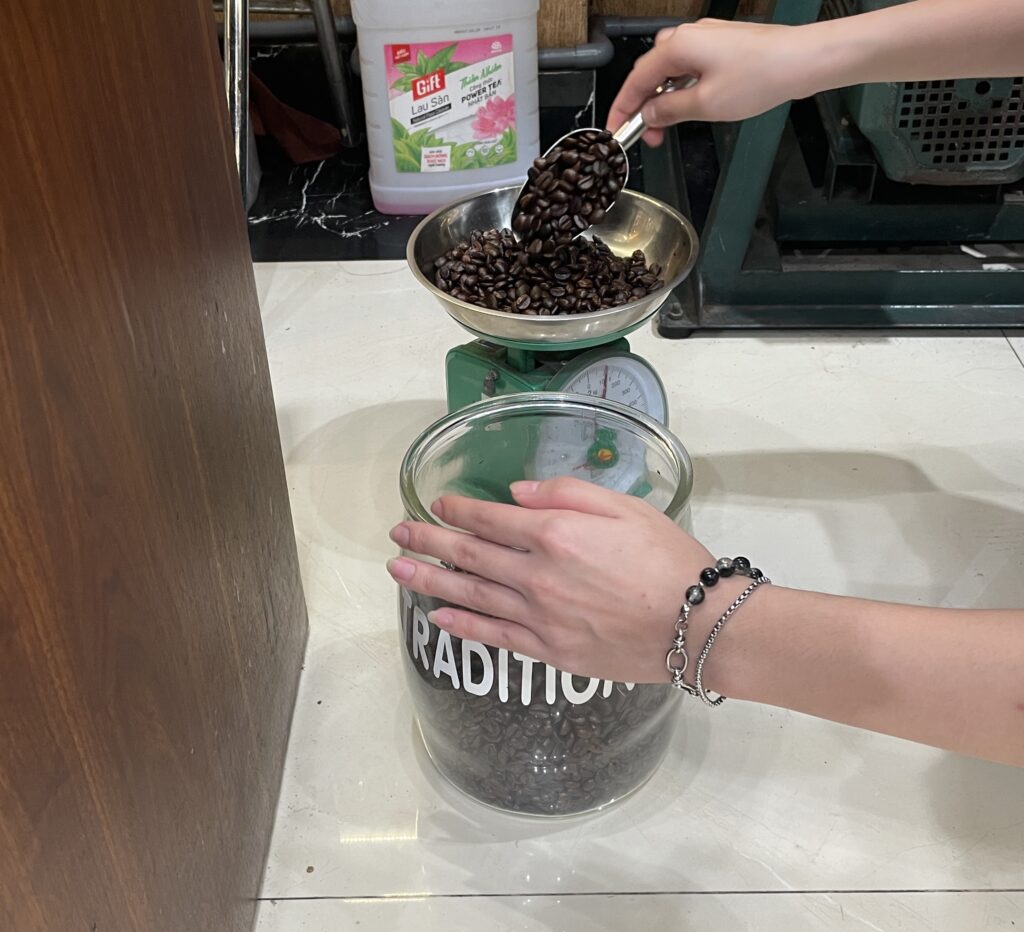
What to Do in Hanoi: Final Thoughts
Hanoi has a pace and personality all its own, loud one minute, meditative the next. It’s a city that rewards slow exploration.
Don’t just rush from one major attraction to the next. Let yourself sit at a café, walk a random alley, or say “yes” to a last-minute pho recommendation from a local.
While many travelers breeze through Hanoi in two days or less, taking the time to explore here opens up a whole new side of the city. And if you’re continuing your journey south, you’ll notice the difference instantly, the food, the rhythm, the attitude.
In Ho Chi Minh City, the atmosphere shifts rapidly and widely. The motorbikes don’t slow down, the skyline grows taller, and the energy is more high-octane.
If you’re curious what that contrast looks like, my guide to the best things to do in Saigon is the perfect place to start.
Whether you’re flying in, training out, or sticking around a while, Hanoi’s grip tends to linger. It’s chaos has layers, and if you give it enough time, it becomes oddly comforting.
You may arrive overwhelmed, but chances are, you’ll leave already planning your next visit.
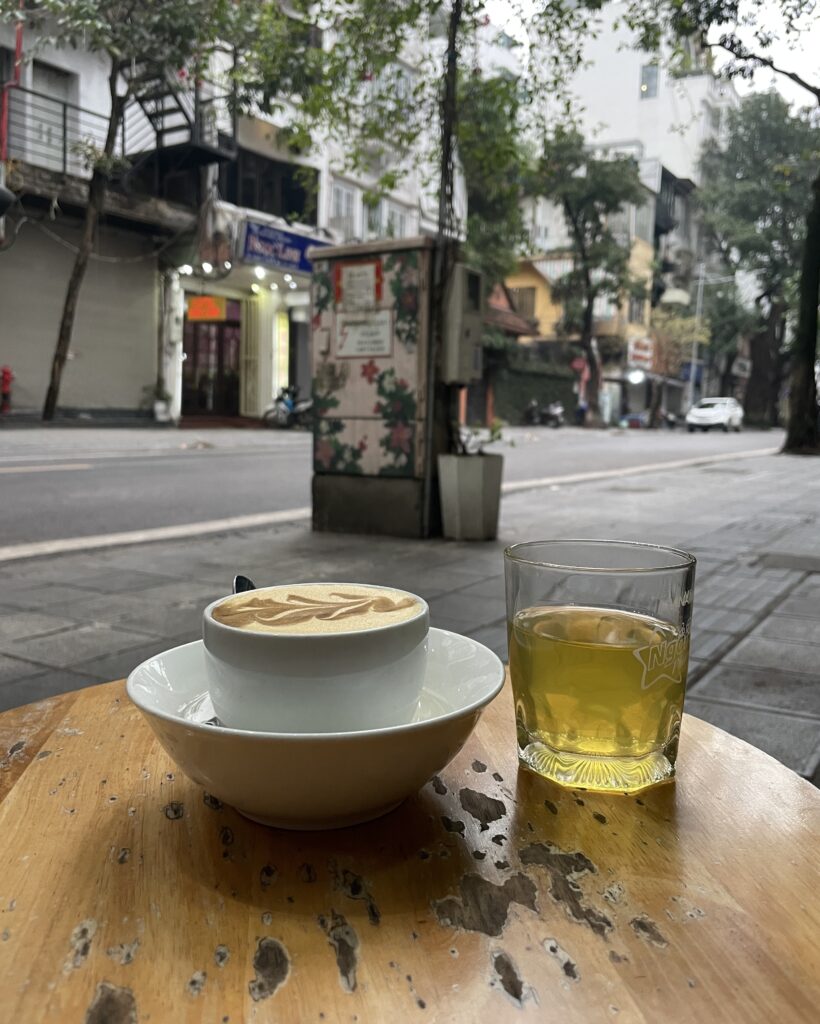
How many days should I spend in Hanoi to cover the top things to do?
Most city highlights can be seen in 2–3 days, covering areas like the Old Quarter, Hoan Kiem Lake, the Temple of Literature, and a food tour.
However, if you plan to take day trips to Ninh Binh or Ha Long Bay, you’ll need at least 5–6 days.
Is it safe to walk around Hanoi in the evenings?
Generally, yes Hanoi is friendly and safe for solo and group travelers. That said, traffic can get chaotic at night, especially in the Old Quarter, and scooters sometimes ride onto sidewalks.
Be alert, cross purposefully, and avoid wandering dim alleyways late at night.
What’s the difference between Hanoi pho and other regional pho styles?
Hanoi pho offers a richer, garlic-forward, and less sweet broth compared to southern versions, such as those in Saigon.
The Hanoi pho style often features more scallions, ground garlic, and a more pronounced herbal finish.
What’s the best way to visit Ha Long Bay from Hanoi?
The most convenient option is to book a day or overnight cruise through Halong Bay. Many visitors opt for Lan Ha Bay overnight tours to avoid the busiest areas. Both can be easily booked online or at your hotel of choice.

